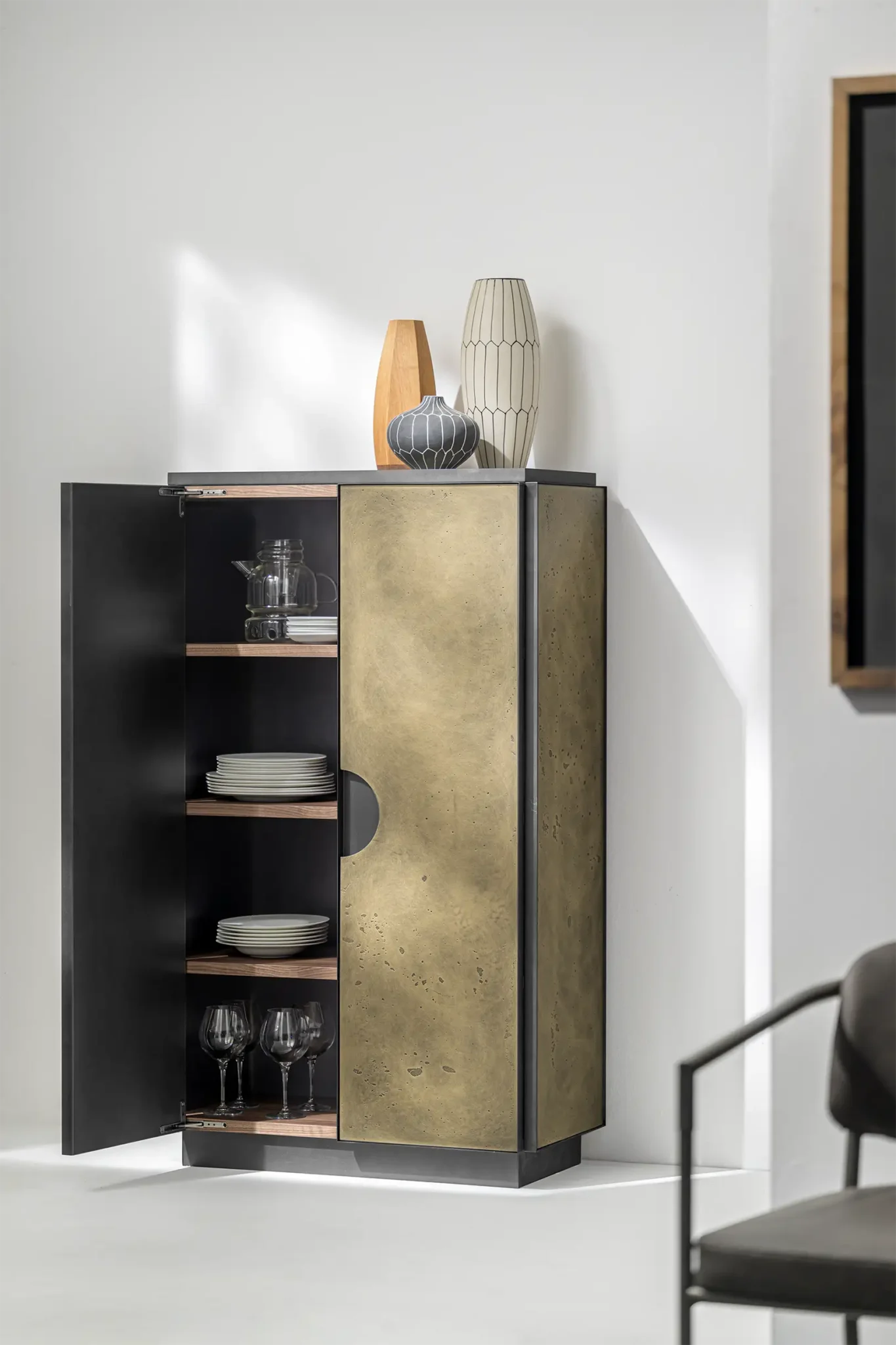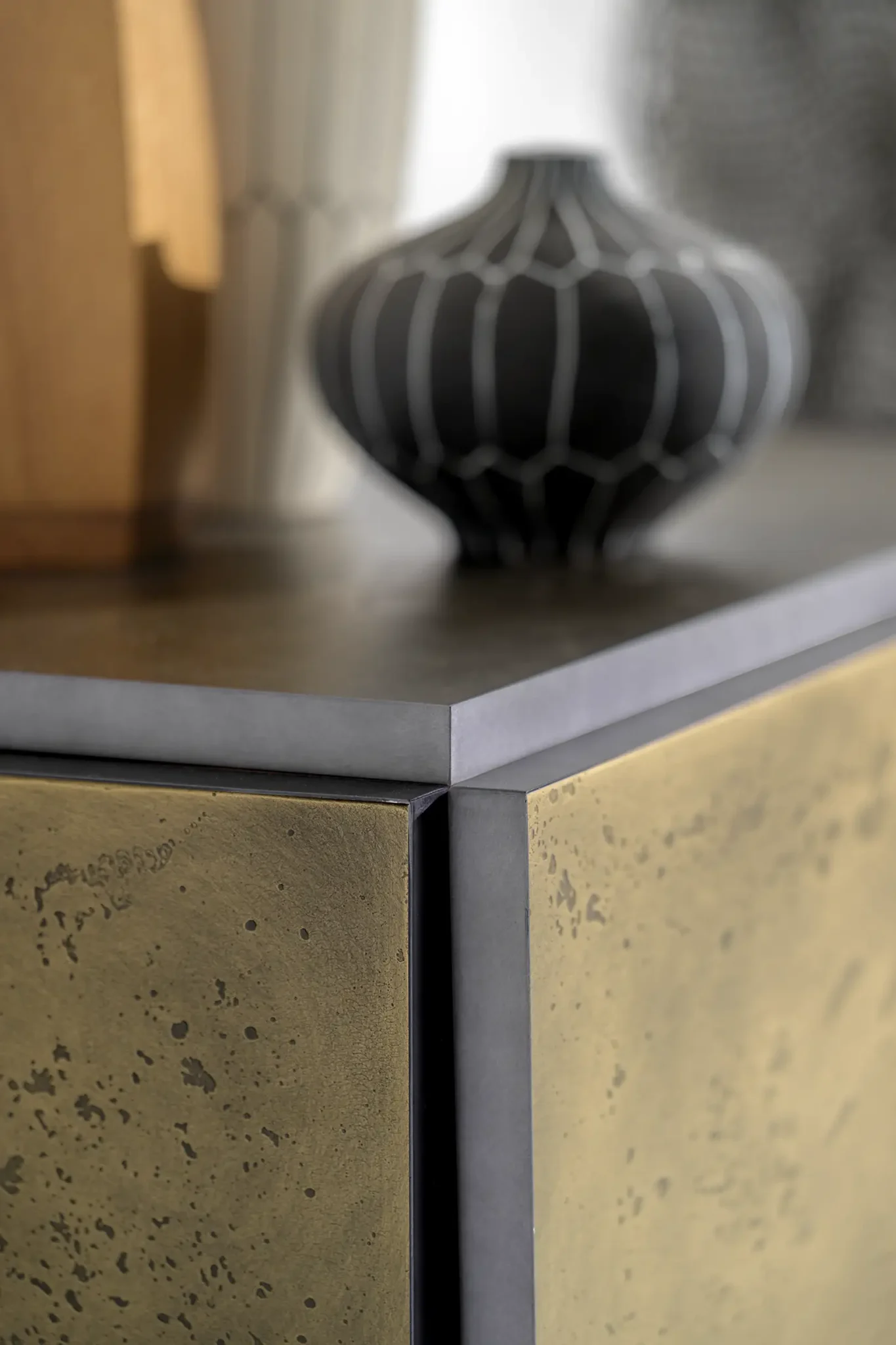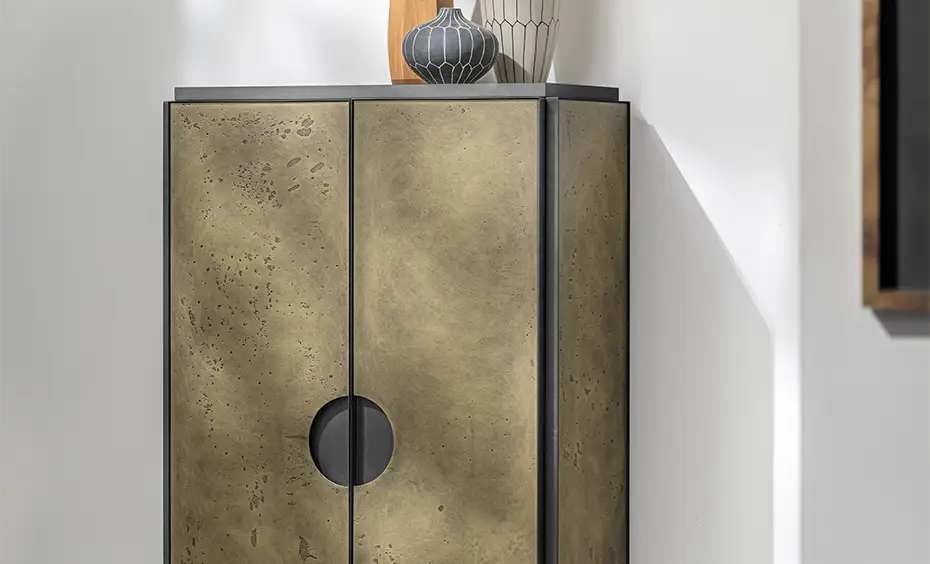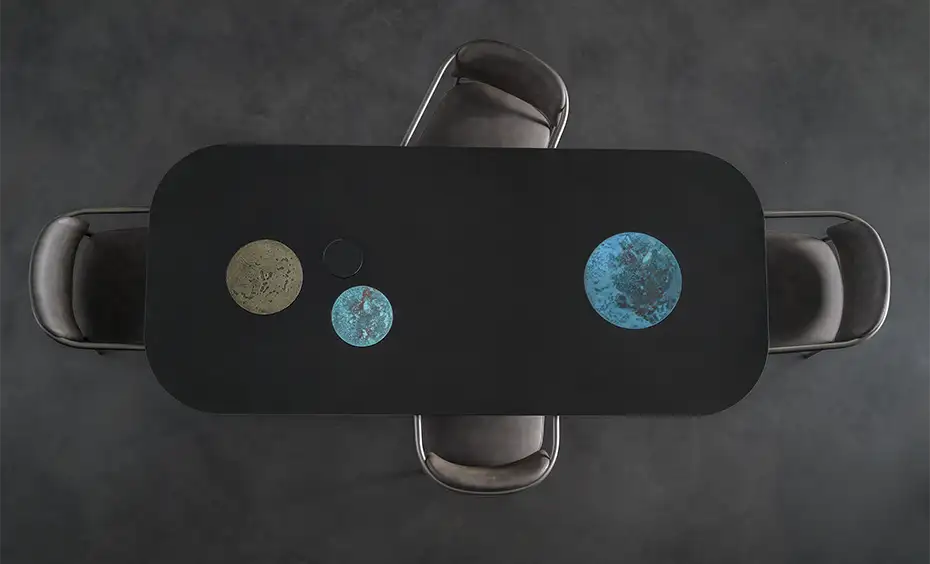Alessandro Tonini presents Sagoma, the collection created for the Soft Perspectives exhibition by Siderio, on display at Fuorisalone 2025.
A project that explores the intersection between planes and volumes, transforming the structural parts into a distinctive element of the design. In the living and bedroom containers, the structure is no longer a simple functional support, but reveals itself through the contrast between surfaces and materials, highlighting the contour of the object. The frame appears to emerge by subtraction from the volume of the container, unveiling its negative and returning an essential geometry. This approach opens the door to infinite combinations of finishes and pairings, enhancing three-dimensionality and materiality.

Inspiration
Sagoma fully embodies the theme Soft Perspectives, transforming metal from a simple structure to the protagonist of the design. The material becomes thin and flexible like a membrane, enveloping and defining the furniture with an unprecedented lightness.
A language that makes metal soft and welcoming, thanks to a perfect balance between visual effect and tactile perception. While maintaining its strength, the material becomes warmer, revealing a sophisticated and harmonious dimension.
The attention to contour and outline provides a clear reading of the shape in space, elegantly emphasizing the geometries. The metal interacts with the light, creating reflections and shadows that highlight the depth and dynamism of the object.
A design that elevates the technical detail to an aesthetic feature, reducing the superfluous to highlight the essence of the form. The edge of the door, usually overlooked, becomes a distinctive signature, the mark that defines the entire collection. The design concept is based on a process of subtraction, where the void between the container and the frame emphasizes the volume, giving a new perception of lightness and depth.
Sagoma’s minimalist approach extends beyond the form to functionality, providing practical and integrated solutions. A design that is never self-serving, but expresses an idea of functional elegance, where every element has a specific role.
Sagoma is a collection that rediscovers the beauty of the structure, transforming the architecture of the object into an unmistakable signature. A project that redefines metal in a softer, lighter, and more refined perspective.

Distinctive Elements
- Boolean subtraction between container and frame
The edge of the door is not just an aesthetic detail but represents the intersection between the container and the frame. The material subtraction creates a geometric sculpture effect, redefining space with lightness. - Contrast between interior and exterior
The alternation of materials and finishes creates a visual and tactile dialogue, enriching the perceptual experience of the object. - Metallic finish of the internal outline
The metallic profile is also present inside the container, creating continuity and dynamism, reinforcing the identity of the collection. - Iconic circular handle
The circular handle emphasizes the concept of lightness and softness, becoming a distinctive mark of the design.

The Designer
Born in Brescia, Alessandro Tonini graduated in Industrial Product Design from the Politecnico di Milano. During his academic journey, he participated in workshops with renowned companies and designers, including Kinder, 3M, Davide Groppi, and Ron Gilad, collaborating with prestigious studios such as Lissoni & Partners.
After significant experiences in Product Design studios, working for brands such as Flos and Haier, he honed his skills in Interior Design and architecture, developing a sophisticated aesthetic and a distinctive design vision.
In 2022, he founded his own design studio, where he combines craftsmanship and technology, experimenting with advanced tools like 3D printers, laser cutting, and thermoforming. Winner of the BGDA Award in 2019 and the iF Design Award, Alessandro develops projects where tradition and innovation merge, enhancing Italian design with a creative and high-quality approach.




